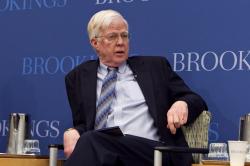The 1997-98 financial crisis in Asia dramatically altered perceptions of the region’s economic performance. Discussion of an economic miracle was replaced by claims of severe structural imbalances and policy distortions. Even the high rates of capital formation that were originally stressed as a sign of Asia’s strength were seen by a new set of commentators as excessive and often in the wrong sectors of the economy. And what was once seen as an important contributor to growth, the intermediation of savings through the banking system, became an illustration of ‘crony capitalism’ and a predictor of crisis. Prior to the crisis, governments were often seen as having made a positive contribution to growth by coordinating and encouraging private saving and investment. After the crisis, they were blamed for creating situations of severe moral hazard through implicit guarantees on investment and the encouragement of excessive foreign borrowing.
The precise causes of the financial crisis continue to be the cause of heated disputes. One viewpoint blames poor economic fundamentals and inconsistent policies in the affected countries. The other traces the crisis to a panic by domestic and international investors, similar to an old-fashion bank run. While reality undoubtedly lies between the two interpretations, the strength of the economic recovery in 1999 casts doubts on the more extreme claims of severe structural imbalances. If the problems were as systemic as suggested, we would have expected a gradual and incomplete recovery. Instead, the whole episode is beginning to look more like a typical, albeit severe, business cycle — triggered by a sharp drop in domestic demand and a buildup of excess inventories — of the type often experienced in industrial economies. Unlike Latin America in the 1980s debt crisis, but like Mexico in 1995, the Asian economies appear to be bouncing back relatively quickly.




